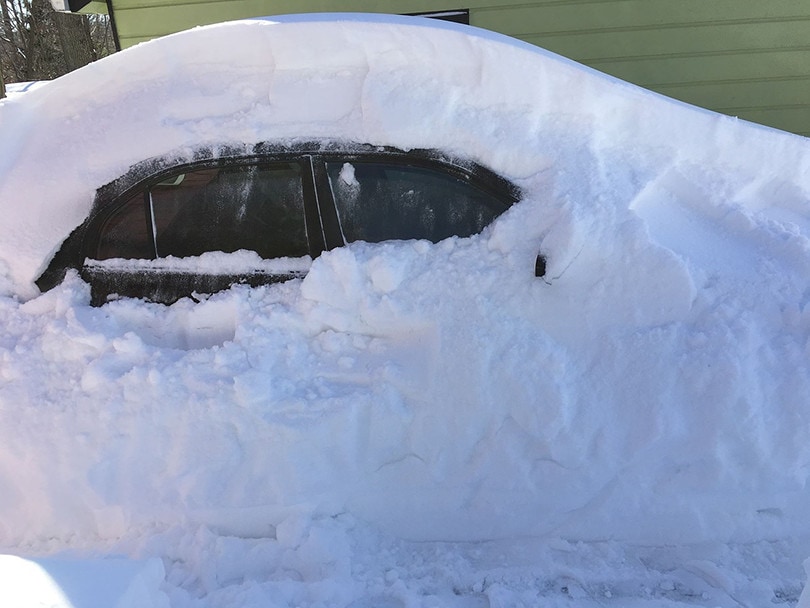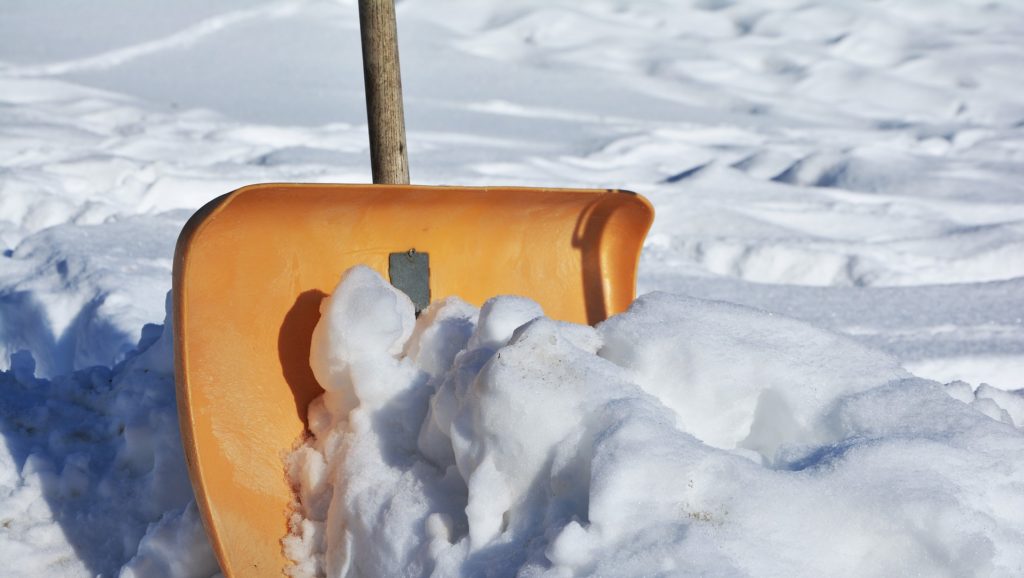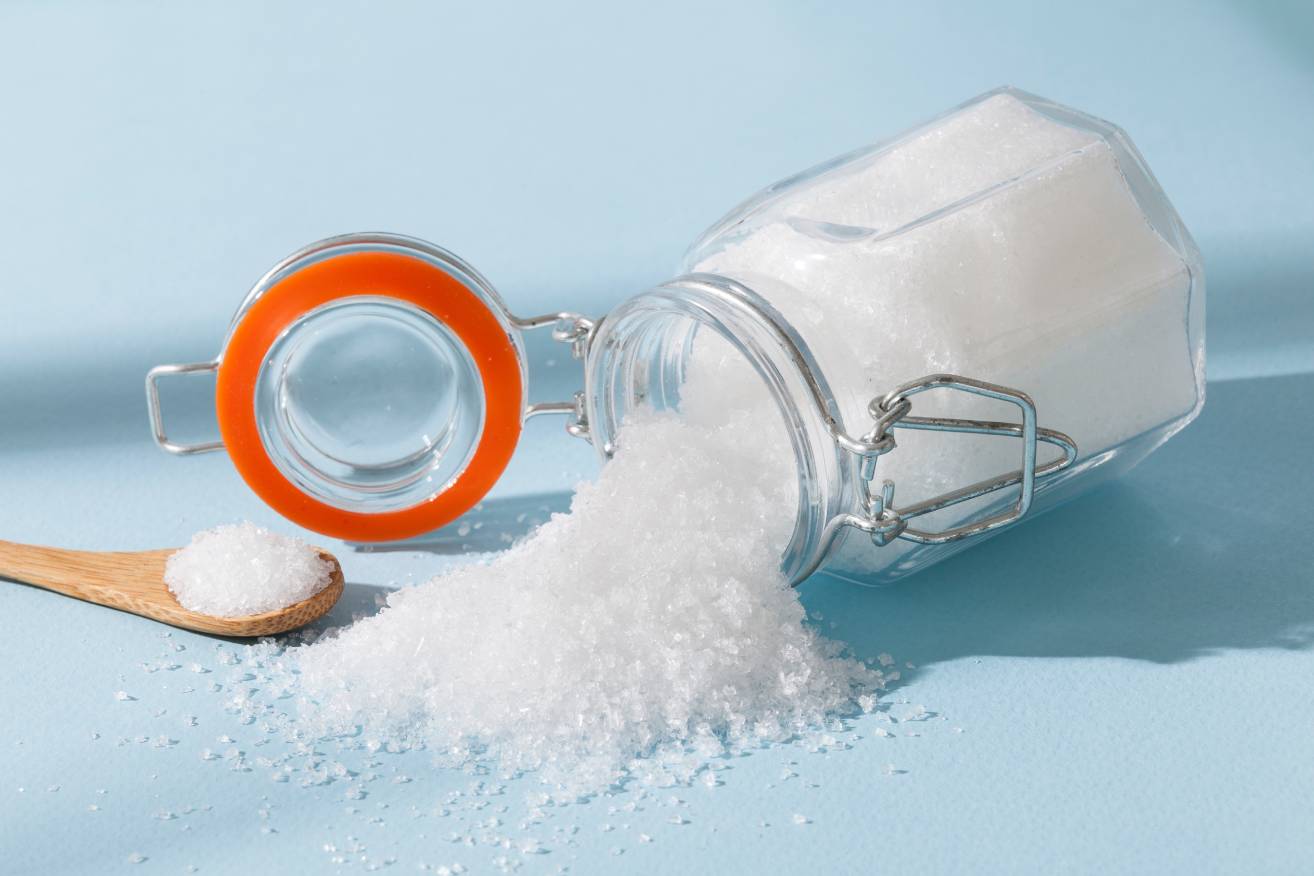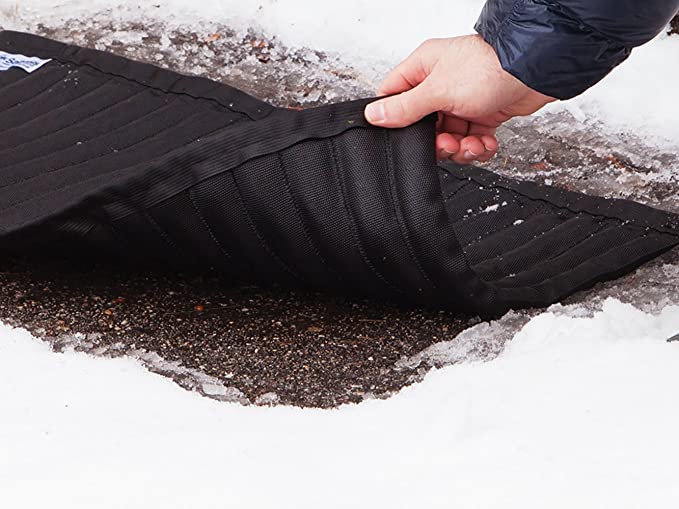How to Melt Ice Without Salt: 11 Tips & Tricks
-
Pete Ortiz
- Last updated:

An icy driveway in winter can be dangerous and frustrating. It’s dangerous because you can slip, fall and injure yourself and it’s frustrating because an icy driveway can often be so slippery you can’t leave the house (even in your car). Even worse, many stores sell out of ice melting products like rock salt, leaving you with seemingly no alternative but to wait until Mother Nature melts the ice for you.
The good news is several excellent salt alternatives will melt ice just as well (and some even better) as salt. Read on to discover 11 tips and tricks on how to melt ice without salt and make short work of an icy driveway, walkway, windshield, or sidewalk this winter.
The 11 Tips & Tricks on How to Melt Ice Without Salt
1. A Snow Shovel and Sunshine

Essential Supplies:
- Snow shovel
- Sunshine
- A strong back
Although this is the most time-consuming method of melting ice without salt, it’s the most effective in many cases. To get the best results, it’s imperative you shovel the snow as early in the day as possible. Shoveling early will give the sun ample time to do its work.
Also, it’s best to prevent anyone from walking on the snow and compacting it, making shoveling more difficult. One drawback of this method is that you need sunshine. If the forecast calls for cloudy weather, one of the alternative methods below will likely be a better choice.
2. Rubbing Alcohol + Dish Detergent
Essential Supplies:
- ½ gallon of warm water
- ¼ cup rubbing alcohol
- 6 drops of dish detergent
- Sprayer (Large and bottle)
This method works well because rubbing alcohol freezes at a much colder temperature than water. Also, because of the compounds in dish detergent, it can’t freeze. In a plastic bucket, combine ½ gallon of warm water with ¼ cup of rubbing alcohol and six drops of dish detergent.
With a large sprayer, spray the mixture liberally on any icy surface. You can use a smaller spray bottle to de-ice your car’s windshield, side windows, and mirrors..
Shovel as much snow off the area to de-ice before using the mixture for better and faster results.
3. Snow Melting Mats
Essential Supplies:
- Snow melting mats
- Extension cord(s)
Snow melting mats are exactly what their name suggests: mats that heat up and melt snow and ice. Snow melting mats typically melt up to 2 inches of snow per hour and are effective while it’s still snowing. They will prevent ice from forming (as long as there isn’t a power outage).
Most snow melting mats are made to be plugged into standard 120V, 240V, or 208V outlets. Some mats are made to be secured to your home’s ground (or roof). Snow melting mats have several drawbacks, including a high cost and taking up a lot of storage space when not being used. They are, however, very effective.
4. Vinegar and Water
Essential Supplies:
- White cooking vinegar
- Water
- Spray bottle
Like rubbing alcohol, vinegar freezes at a lower temperature than water and will help melt ice. One caveat is that vinegar isn’t effective for large patches of ice like a driveway or walkway. It’s better for de-icing a windshield, side windows, and mirrors. Simply mix 50% white vinegar with 50% water in a spray bottle and spray the mixture where you want to melt ice.
Some people keep a spray bottle with vinegar and water in their car the entire winter to be prepared when ice storms strike.
5. Sugar

Essential Supplies:
- White sugar
- Hand spreader (optional)
Spreading sugar on an icy walkway or sidewalk is an alternative to salt and is better for plants, animals, and the environment. However, it’s not as effective and costs a little more than salt. To use sugar, simply purchase a large bag of plain, white sugar and spread it liberally with your hand over any icy areas.
Like salt, sugar doesn’t actually melt the ice but instead lowers the freezing point of the water. Sugar also adds a gritty texture to aid your grip when walking on icy surfaces.
6. Alfalfa Meal fertilizer
Essential Supplies:
- Alfalfa meal fertilizer
- Hand spreader (optional)
Alfalfa meal is an organic fertilizer made from fermented alfalfa seeds. Like all fertilizers, alfalfa meal contains nitrogen, which effectively melts ice. Alfalfa meal also adds a gritty texture over ice and snow, providing grip when folks are walking on the icy surface.
One drawback is that alfalfa meal attracts rodents and pests looking for a free meal. Spreading alfalfa meal fertilizer by hand is the best method to melt ice.
7. Urea

Essential Supplies:
- Urea
- Hand spreader (optional)
Another fertilizer, urea, contains about 46% nitrogen and, as we’ve discussed, nitrogen melts ice effectively. Like alfalfa meal, spreading urea by hand is the most effective method of de-icing a driveway, walkway, etc. Urea also has several benefits when compared to salt.
It’s less corrosive and is one of the least toxic of all the ice melting solutions on today’s list. However, it’s best not to use urea if you live near a lake, stream, or other body of water, as the nitrogen content is so high that it can cause algae blooms.
Mix urea with sand to melt ice and put down a layer of grit for a better grip when walking.
8. Potassium Acetate
Essential Supplies:
- Potassium acetate
- Hand spreader (optional)
For home use, it’s highly unlikely you’ll be able to purchase enough potassium acetate to melt your driveway. The reason is that it isn’t commercially available in large quantities. However, it does work well, which is why it’s used to prevent ice from building up on runways at many airports. You can purchase small amounts of potassium acetate and spread it on walkways and your home’s entrance.
It’s best to wear gloves to protect your skin when spreading potassium acetate.
9. Baking Soda

Essential Supplies:
- Baking soda
- Hand spreader (optional)
Baking soda, the product that made Arm & Hammer famous, is actually a type of salt (sodium bicarbonate). Like rock salt, it lowers the freezing temperature of the water and helps prevent ice buildup. Also, baking soda is less corrosive since it’s less alkaline than rock salt. Spreading baking soda by hand over icy areas is the easiest way to use it.
If there’s snow in the forecast, spread baking soda on driveways, walkways, and other areas to prevent ice from forming.
10. Calcium Chloride
Essential Supplies:
- Calcium chloride
- Hand spreader (optional)
Although it’s slightly more expensive than rock salt, calcium chloride is more effective. It also works in lower temperatures and works faster. Calcium chloride is an exothermic compound, which means it produces heat when exposed to moisture.
As you might imagine, the heat it produces helps melt ice much faster. As with many of the products on today’s list, you can spread calcium chloride by hand on areas that need to be de-iced. Many experts recommend calcium chloride as one of the best ice melting products available. One reason is that only a small amount is needed to melt ice effectively.
Calcium chloride is an essential macronutrient that’s very beneficial for the soil. If you use it in winter to melt ice, it will help your plants grow when spring arrives!
11. Magnesium Chloride

Essential Supplies:
- Magnesium chloride
- Hand spreader (optional)
Magnesium chloride is a salt that can melt ice quickly. Magnesium chloride is hygroscopic, which means it absorbs moisture, and this trait helps it dissolve ice into a brine faster.,. One significant benefit of using magnesium chloride is that it leaves very little residue behind and is extremely easy to clean up afterward.
Also, it can melt ice at a lower temperature than rock salt and urea. One drawback is that it costs more than rock salt and isn’t as effective in extremely cold temperatures. Spreading magnesium chloride by hand is the easiest way to use it, but you can also use a handheld spreader.
Bonus Tip: Products that Don’t Melt Ice (Or Need Salt to Work)
You’ll find several more so-called “remedies” for melting ice if you search, but most of them either don’t melt ice or need salt to work. They include:
- Beet juice: Beet juice needs salt brine to work (and stains like crazy!).
- Sand: Yes, sand adds grip, but nothing more. It’s also a pain to clean up after the ice finally melts.
- Coffee grounds: Used coffee grounds add grip but don’t melt anything.
- Wood ash: Wood ash needs potassium salts to work. Without it, it simply adds traction.
Final Thoughts
In winter, icy driveways, walkways, windows, mirrors, and sidewalks can be dangerous. That makes melting ice a priority around your home and on your vehicle to protect yourself, your family, and even your pets.
If you don’t have rock salt available, the products and tips on today’s list will effectively melt ice. Some of the methods are more effective, safer, and work faster than salt.
- Related Read: How Much is Motorcycle Insurance? What You Need To Know!
Featured Image Credit: MoneyforCoffee, Pixabay
Contents



